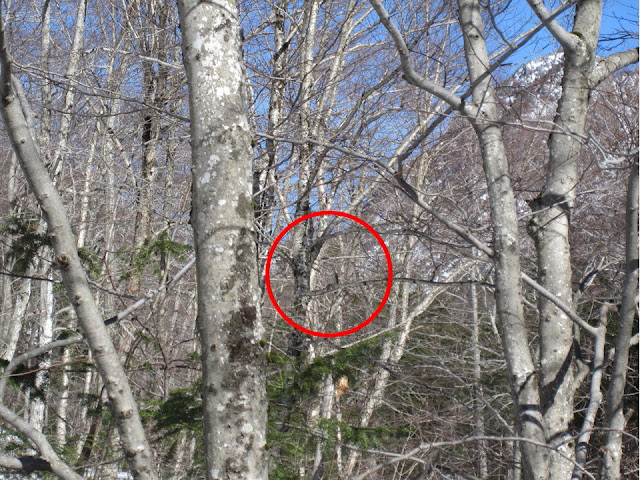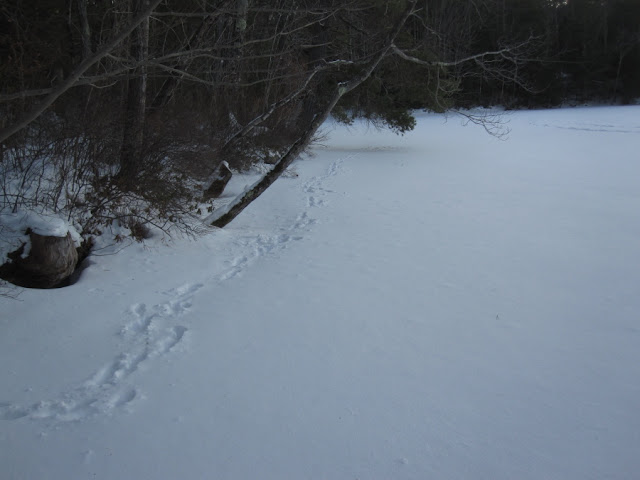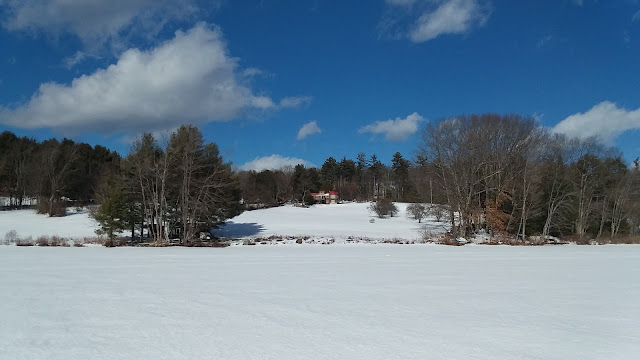There's not much snow left in the Lakes Region at this point though the ice on the lake is still hanging on strong. Sixty degree weather took a toll on the snow pack, but it didn't deter one intrepid skier from taking a few more circuits around Lake Wicwas. I was barely bold enough to venture out on one well-shaded part of the lake yesterday to see what the ice was like, and I found thirteen inches of ice remaining - six inches of solid black ice underneath seven inches of soft, porous, white ice. But that first step out was sketchy - I actually stepped onto a floating iceberg that was separated by cracks before I walked out to the main ice sheet.
 |
| Thick ice in some places, but treacherous getting to it. |
All that snow turning to water is replenishing our lakes, washing out the winter road salt, and filling the streams and rivers and there haven't been any really hot temperatures or heavy rains so the snow melt has been pretty steady without any big flooding problems or ice dams at this point. Still, the beavers are going to have to get busy soon to repair the leaks that have sprung in their dams.
It won't take them long to patch these small breaches.
But as the snowpiles waned, turning to water, the snowdrops blossomed.
 |
| Snowdrops |
Crocuses are starting to poke up and will soon be in bloom. Spring flower season has begun!
More birds are starting to appear as the shoreline gaps in the ice expand to give them more space to explore. The sounds and sights of Canada geese have become common as the migrating geese search for breeding sites.
 |
| A flock of geese scouting the territory. |
When nesting time comes the female goose will select the site and do most of the nest construction while the male (gander) will perform guard duty, defending the nest and surrounding territory from predators as well as other intruding pairs of geese.
Now, please excuse me while I rant for a minute on one of my pet peeves. Why is it that Bud Light drinkers feel that the world is their trash can, and that someone else should pick up after them? Everywhere I go I find Bud Light cans strewn around, whether it's on the side of the road (dozens) floating in the lake, or five miles up in the Ossipee Mountains on the snowmobile trail.
 |
| On the road, |
 |
| In the lake, |
 |
| Five miles up Mt. Shaw. |
 |
| Three Bud Lights in this picture. |
Yes, there are others, but Bud Light is far and away the beer of litterbugs.
OK, I'm done. Back to something nice. How about a mystical foggy evening to end the week.
 |
| The late afternoon sun filters through the trees, illuminating fog rising off the ice. |
 |
| An hour later, sunset. |


































